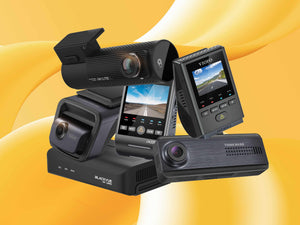A radar detector is best mounted as high up in the vehicle as possible so that the detector has a good range of radar detection. The most common and the standard location for mounting the radar detector would be on the front windshield of the vehicle, near or around the center of the rearview mirror. If you're pairing your radar detector with a dash camera, we would recommend mounting your radar detector beneath or beside the dash cam so that your dash cam video footage doesn't get impacted by the radar's line-of-sight, still near the rearview mirror. Most importantly, make sure that the radar is hidden or concealed is helpful for your protection, so other locations to consider could include behind the steering wheel or lower on your main console. These two devices can work hand-in-hand together to offer you the best protection.
You can tuck the power cord through the headlining of the vehicle so that it's kept out of place. Keep in mind that there are a few vehicles that have metallic tint across their windshield which will act as a barrier for your radar detector detection capabilities. This metallic tint will severely impact the performance of your radar detection so you want to avoid placing the radar detector near metallic tint. Ceramic tint does not affect radar detectors (but may affect laser detection and laser jammers).
An easy way of determining if your vehicle uses metallic tint or not is to drive to an area that has false alerts and then drive your vehicle until the radar signal is weak. From here, move your radar detector to the tinted area and see if the signal strength decreases. If it does, that means your vehicle does have metallic tint that will negatively impact your radar detector’s performance.

